CDF hieroglyphics
The Community Defence Forces of Sober Thought use a system of graphical symbols to represent their troops on maps, vehicles, tables of organisation, NSWikipedia articles, etc. The system applies equally to the land, naval, air and combined services formations, units and sub-units. They are jocularly but commonly called hieroglyphics, even in somewhat formal military settings.
Contents
Basic rules
If you keep a few rules in mind, and execute them in the order they appear, the meaning of the symbols becomes clear:
- Each element of a particular symbol is cumulative. So superhuman special forces units whose members fly choppers, skydive, ride horseback and operate submarines all at the same time may use elements to form part of their whole symbol.
- If the meaning of the symbol is already implied or unclear, remove as many elements as possible or necessary to make the symbol helpful and clear. While it may be accurate to list all the applicable symbols for a landing ship laden with its normal complement of seven marine platoons and four helicopter flights, why not list one marine assault group and one composite helicopter squadron instead? Better yet, leave them out entirely if the meaning is already clear from the context.
- Only elements which are logically compatible are permitted. An oxymoronic heavy light infantry division cannot exist because heavy infantry and light infantry divisions are mutually exclusive members of the infantry division class. However an improbable but nevertheless logically possible heavy mountain division could exist, although one hopes there is good reason and the Chief of Staff who raised such a division is prepared for some interesting career changes and challenging postings.
- An element may apply to several types of groupings of troops. Regardless of service or branch, a single symbol or series of symbols may be used if applicable. For instance, the same ammunition symbols may be used by field artillery, naval ship, maintenance engineering and supply units since each of these groupings may need to refer to same specific classes of ammunition.
- An element must be applied if all of the subordinate groupings qualify. This states the obvious, namely that if a squadron consists entirely of fighter aircraft that that makes the unit a fighter squadron and not a generic squadron.
- An element may be applied if at least half (and preferably at least three quarters) of the subordinate groupings qualify. Let us consider a dozen hypothetical but quite plausible engineering battalions, each with three to five field and one headquarters companies. In the Land Engineering Branch, there are three sub-branches (combat, construction and maintenance engineering) and ten types. Companies are normally independently raised from within the types (plus headquarters as the final de facto type), the lowest level of bureaucratic organisation. Regardless of the configuration, these would have the symbols indicating "battalion" and "engineering." Below is what else, if anything, they would get according to their mission and composition:
- combat support for a desert division; mine clearance, mine clearance, flamethrower, water; "combat engineering"
- rear area security for a field corps; mine, mine clearance, mine clearance; "mine"
- explosives expertise for an army; mine, mine clearance, ordnance; "ordnance"
- engineering support for a brigade group; mine clearance, NBC defence, water; none
- restoration of municipal infrastructure; bridge, construction, construction, construction, water; "civil engineering"
- rebuilding bridges and other structures; bridge, construction, construction, construction; "construction engineering"
- service support for an urban division; bridge, construction, water; "civil engineering"
- operating a railway in territory prone to guerrilla warfare; mine clearance, bridge, railway; "railway" (although only one company is nominally a railway company, another is tasked with keeping the railway tracks free of explosives and the last is tasked with keeping the railway bridges free of structural defects; an identical composed battalion with less unified goals would rate no additional symbol)
- railway, mechanical, electrical; "maintenance (engineering)"
- mechanical, electrical, ordnance; "maintenance (engineering)"
- mechanical, mechanical, electrical; "mechanical engineering"
- construction, electrical, electrical; none
Elements applicable to two or more services
The hollow square 200 units wide by 120 units high with solid borders is called the field of the symbol. It is capped with an element 40 units high which indicates the size of the unit.
The size of the groupings are indicated by one to five repetitions of three different figures: Xes, with a base of 28 units, represent the largest formations; perpendicular lines spaced 20 units apart when required; and, solid circles with a diameter of 20 units and 10 units space on all sides. The names of the units they refer to are different for each service and sometimes for formations consisting of troops from at least two services. See a few examples on Figure 1.
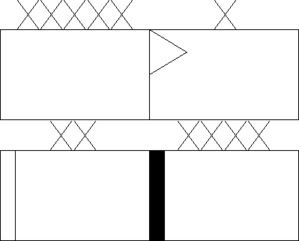
Figure 1 Clockwise from top left: generic grand command, generic headquarters minor command/brigade group, generic heavy chief command/army, generic light vice command/division
For bi- or tri-service formations, the elements indicating size are as follows: XXXXXX community command, XXXXX means grand command, XXXX chief command, XXX command, XX vice command and X minor command. The Xes, pipes and solid circles have different meanings in each service and their various specific meanings in the appropriate sections, and may apply to multi-service units as well.
A generic or non-specific symbol would consist of an empty field but with indicators for the size. All other symbols have at least something in the field. Fig. 1.
Headquarters are indicated by attaching by its hypotenuse a triangle with a base of 60 units and equally long other sides to the upper left of the field.
The weight (in numbers of troops, calibres of weapons, types of weapons, level of training, etc.) is indicated in the left most 20 units of the field, a solid vertical line indicating heavy and a hollow line indicating light.
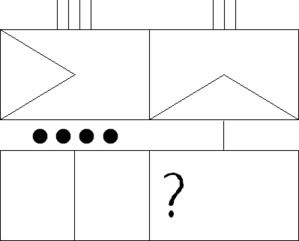
Figure 2 Clockwise from top left: combat support, service support, generic intelligence, generic reconnaissance
Combat support is indicated by a similar triangle but the hypotenuse has a base of 120 units and occupies all of the left side of the field. Service support uses a triangle with the hypotenuse attached the full width of the field and extending 60 units high. Combined support consists of combat and service support symbols, and resembles the Land Service's infantry symbol if it had a missing upper right arm.
The reconnaissance function is indicated by a perpendicular line in centre of the field dividing it into a left and right side. The closely related intelligence function by a sans serif question mark "?" 60 units high and 15 units wide located in an area 20 units from the left of the field.
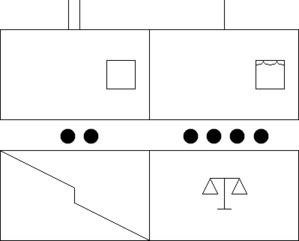
Figure 3 Clockwise from top left: generic defence, generic air defence (anti-aircraft), generic military police, generic signals/communications/electronics/electrical
The defence or "anti-" symbol is a square 40 units per side which appears 40 units from the top and 20 units from the right side of the field. Inside that square goes a shrunken version of the menace from which this grouping provides protection, e.g., air defence gets an air symbol in the square (could be air defence artillery or fighter aircraft), mine clearance gets a mine symbol in the square (could be minesweeping combat engineers or naval minehunter vessels), anti-tank gets an armour symbol in the square (could be tankbuster aircraft or anti-tank artillery).
The concepts of signals, communications, electronics or electrical are conveyed by a vertical 20 unit line segment in the centre of the field joined to the upper left hand corner by one line segment and to the lower left by another.
Military police are indicated by a 40 unit vertical in the centre perpendicular to a 40 unit horizontal line in the centre above and 20 unit horizontal line in centre below, attached on left and right to the top line of a triangle with a base and height of 20 units. The entire symbol sits on a 20 unit horizontal line.
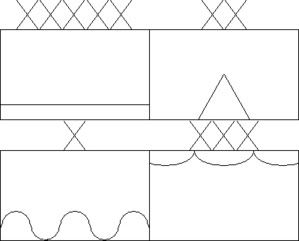
Figure 4 Clockwise from top left: generic land, generic mountain, generic air, generic water
Environment is indicated as follows:
- land, horizontal line 20 units from the bottom of the field
- mountain, equilateral triangle of 60 units and height starting from centre bottom of the field
- water, top half of 40 unit diameter circle 20 units from bottom of the field joined to bottom half of same to top half of same to bottom to top
- air, left most two thirds of the bottom half of an oval 40 units high by 80 units wide dipping no lower than 20 units from the top of the field, bottom half of same oval, right most two thirds of same oval.
The Land Service alone has the additional environment of desert. See also service-specific sections on propulsion, a broadly similar concept. If an environment is implied by another symbol, it is not necessary to include. E.g., the symbol for vessel logically requires it to be on land, so add it only for clarity or for emphasis if it functioned on land and water like a hovercraft; the symbol for infantry need not include land, unless it is airborne infantry and requires both land and air to indicate arrival by parachute.
Artillery is symbolized by a solid circle. See the Land Service and Naval Service for illustrations and details.
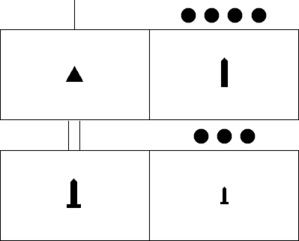
Figure 5 Clockwise from top left: generic munitions/ordnance, artillery, small arms, rocket
The basic munitions or ordnance symbol is a solid equilateral triangle with a base of 20 units. Cannon (i.e., those firing projectiles with a diameter of at least 20 mm by exploding gunpowder) are indicated by a filled rectangle 10 units wide at its base, 35 units tall, topped by a solid triangle 10 units wide at its base and 5 units high. Rockets are indicated by the same symbol as that of cannon shells, except a rectangle 5 units tall and 20 units wide is superimposed on the base. Small arms ammunition (i.e., those firing projectiles with a diameter of less than 20 mm by exploding gunpowder) are indicated by the same symbol as that of rockets, except all dimensions are halved.
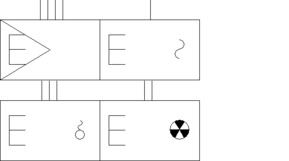
Figure 6a Clockwise from top left: generic combat engineering, flame weapons, NBC weapons, mines
The basic engineering symbol is a sans-serif capital E whose dimensions are 30 units wide by 60 units tall, placed 20 units from the left of the field and 30 units from the top of the field. Its modifying symbols must always be used in combination with the "E," centred inside an area 40 units square (starting 20 units from the right of the field and 40 units from the top), and may be considered in three classes (one of which applies only to the Land Service, see Figure 6c appearing after Figure 9):
- Combat engineering: mine, a circle 20 units in diameter capped with the left half of a 10 unit diameter circle and then the right half of the smaller circle (could indicate a landmine, naval mine or airdropped mine depending on additional symbols); flamethrower/firemaking, right half of a 20 unit diameter circle topped with left half of same circle (could indicate land flamethrowers, naval fireships or air delivered napalm depending on additional symbols); nuclear, biological and chemical, circle 40 units in diameter, split into six equal pie pieces alternating solid and hollow starting with the top piece;
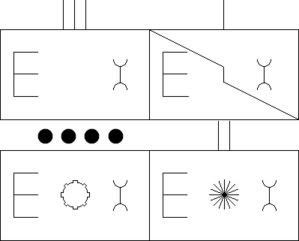
Figure 6b Clockwise from top left: generic maintenance (engineering), electrical engineering/electronic maintenance, jet aircraft maintenance, mechanical engineering/vehicle maintenance
- Maintenance engineering: bottom half of a 20 unit diameter circle joined by a 20 unit line segment to the bottom half of the circle. Often combined with other symbols to indicate the mechanical devices being maintained, e.g., lightning bolt for electrical engineering, cog for mechanical engineering, jet fan for jet air maintenance, or just an environment indicator.
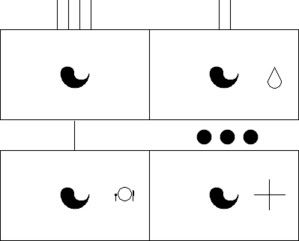
Figure 7 Clockwise from top left: generic supply, fuel supply, health supply, food supply
Supply is indicated in the centre of the field with the bottom half of a 40 unit diameter circle topped with the top half of a 20 unit diameter circle beside the bottom half of a 20 unit diameter circle. It often combines with a symbol for the material it supplies, such as munitions (see above), fuel (bottom half of 20 unit circle topped with a 20 unit base and height triangle open at the bottom; hollow for gas, grey for diesel and black for oil), food (20 unit diameter circle with a solid perpendicular 10 unit line on left (triple thickness top 3 units), and 15 unit tall (double thickness top 8 units less the very top most unit) and 5 by 2 unit oval on right atop 10 unit line on right), pharmaceuticals (see health series below), etc., or the kind of grouping it supplies, e.g., + for health, the symbol for helicopter, etc. The subsidiary symbol appears the same small-size field as engineering specialties do, unless it already has another place which doesn’t interfere, e.g., the signals/electricity symbol.
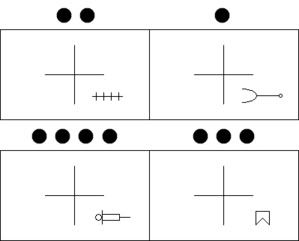
Figure 8 Clockwise from top left: surgical team, medical practitioner, dental squad, public health platoon
Health is indicated by a + symbol with arms 40 units long placed in the centre of the field. The lower right quarter of this full-size field serves as a small-size field in which the symbols indicating health specialties are centred as follows:
- surgical, 40 unit horizontal line segment intersected at the 5, 15, 25 and 35 unit marks by 10 unit lines half above and half below the horizontal
- medical, right half of an oval 20 units high and 40 units wide joined to a 30 unit horizontal line segment which in turn is joined to a 5 unit diameter circle
- public health, 10 unit diameter circle attached to perpendicular 20 unit line segment attached to horizontal rectangle 10 units high by 25 units long, capped by a 15 unit long horizontal line segment
- dental, 20 unit square with the bottom line replaced with a triangle 10 units high and 20 units wide with the base line missing
- pharmaceutical, 20 unit diameter circle bisected by a horizontal line
Elements only applicable to the Land Service
The Land Service symbols use the same number of Xes for formation indicators as the multi-service symbols, with slightly different meaning: XXXXX means army group (front or group of armies in some real life armies), XXXX (field) army, XXX (field) corps (army corps in some armies), XX (field) division and X brigade group (4-8 battalions).
Unit size is indicated with pipes 1 unit thick, 40 units high and spaced 15 units apart where necessary. Their meanings are: : ||||| branch (Land Service, parent unit of battalions, never a fighting force) or regiment (Civil Guard only, parent unit of battalions, never a fighting force), |||| brigade (3-5 battalions, called a regiment in some armies), ||| demi-brigade (2-3 battalions, called a regiment in some armies), || battalion (also called a squadron or regiment in some armies) and | company (also called a squadron, troop or battery in some armies; most companies are actually battalion subunits but some are units in their own right).
Sub-unit size is indicated with solid circles 20 units in diameter and spaced 10 units apart where necessary. Their meanings are: **** platoon (also called a troop or gun section in some armies), *** squad (also called a section or patrol in some armies), ** team (called a fireteam or group in some armies) and * individual troop (i.e., a single soldier).

Figure 9 Clockwise from top left: infantry brigade, cavalry battalion, armoured company, artillery demi-brigade
The infantry symbol is a saltire or X created when one line segment running from the upper left corner to lower right intersects with another from the upper right to lower left. Do not confuse it with the mixed support symbol which has one fewer arm.
Although cavalry is obsolete, Capital Province still raises some horse cavalry for ceremonial purposes. Its symbol is a line leading from the upper right of the field to the lower left. Although other real life armed forces use it as such, the CDF does not use it as the reconnaissance symbol which remains a perpendicular line dividing the field into left and right sides. Use the symbol for horsed propulsion below for units which are horsed like cavalry but do not fight on horseback.
Land artillery has a diameter of 20 units and lies in the centre of the field, and may have one of the ammunition series of symbols superimposed to indicate ordnance with which the artillery grouping is equipped.
The armoured symbol, a rectangle 80 units wide by 40 units high, with rounded edges consisting of quarters from a circle 40 units in diameter, appears in the centre of the field.
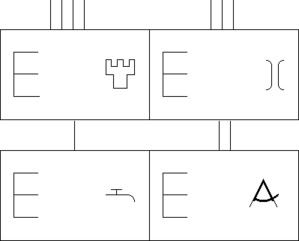
Figure 6c Clockwise from top left: construction (engineering) brigade, bridging (engineering) demi-brigade, survey/cartographic (engineering) battalion, water company
In addition to the combat and maintenance engineering symbols already mentioned above, the Land Service has additional specialties. Again in combination with the sans-serif capital E on the left of the field, civil engineering adds the following symbols on the small-size field on the right:
- construction engineering, stylised tower with 20 by 20 unit base, 40 unit wide by 20 top serrated by two merlons 10 units high by 8 units wide;
- bridging (may be built under fire or in safe areas, temporarily or permanently), two vertically centred parallel lines separated by 8 units and capped by quarters of a 16 unit diameter circle (upper right quadrant on upper left line, upper left quadrant on upper right, lower right quadrant on lower left, lower left quadrant on lower right);
- potable water, horizontal line segment 30 units long attached to upper right quadrant of a 20 unit diameter circle, with an 8 unit-per-arm arm T attached 16 units from the left;
- surveying/cartography, two diagonal lines 20 units from top left and terminating in the bottom corners, 40 unit long circle segment originating 30 units from top of left diagonal, with circle segment and top 40 units of diagonals triple thickness.
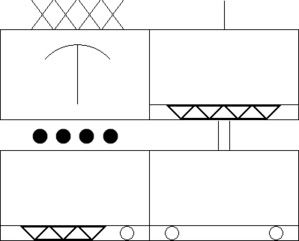
‘’’Figure 10a’’’ Clockwise from top left: desert grand command, tracked transport company, wheeled transport battalion, half-tracked transport platoon
The symbol to indicate adaptability to the desert environment is an 80 unit vertical line in the centre topped by a circle segment from a 120 unit diameter circle (only 20 units deep) to suggest a palm tree.
A unit indicating the specific form of land propulsion but otherwise is generic is deemed to be a transportation unit. Indicate forms of propulsion on land by combining as appropriate the land symbol with:
- fully tracked, seven interlocking triangles 40 units wide by 20 units high by 2 units thick, the first starting 20 units from the left of the field and being point down
- half tracked, five triangles as above plus a 20 unit diameter circle starting 20 units from the right of the field
- wheeled, one 20 unit diameter circle starting 20 units from the left of the field and another starting 20 from the right
- railway, doubled circles from the wheeled symbol
- horse or similar quadraped, railway symbol except bottom half of 20 unit diameter circles replaced with parallel vertical lines 20 units apart.

‘’’Figure 10b’’’ Clockwise from top left: rail transport demi-brigade, animal transport platoon, rocket artillery battalion, armoured infantry division
The remaining two complete symbols are examples of very common combinations indicating armoured infantry (infantry transported in armoured vehicles) and rocket artillery.
Elements indicating formation size are as follows: XXXXX means grand fleet, XXXX chief fleet, XXX fleet, XX vice fleet and X carrier or troopship group, the latter of which are technically tri-service formations typically commanded by senior naval officers. A large number of small craft gathered together under the command of a tender make up a flotilla, indicated by an X as well.
Peculiar to the three services, the navy cannot make the distinction between unit and sub-unit in quite the same way because all vessels of whatever size are by definition units because you cannot launch half a submarine or three quarters of a cruiser. So vessels themselves are the units and they are divided into sub-units. Furthermore, "large" vessels are called ships and "small" vessels are called boats. In practice this boundary is somewhat elastic since in real life very large and powerful nuclear (SSBN not just SSN) submarines are called boats while rather puny corvettes are called ships. The CDF Naval Service's fudging position is that boats are vessels commanded by Vice Lieutenants or below while ships are vessels commanded by Lieutenants or above.
Within every vessel are found at least three departments: bridge, naval engineering, plus one or more of naval weapons, naval stores or maintenance -- whether there are two or two hundred people in a particular department. Additionally, ships' departments may be subdivided into sections, watches or both (e.g., the Naval Gunnery Section of the Naval Weapons Department on a destroyer, the Second Watch of the Naval Engineering Department on a tender, the Third Watch of the Transmission Section of the Naval Engineering Department on an aircraft carrier).
Elements indicating ship unit size are: |||| unladen aircraft carrier, unladen troop ship and battleship (none built or ordered), all normally under the command of a Commander; ||| cruiser and destroyer, normally Vice Commander and Chief Lieutenant respectively; || frigate, tender, unladen landing ship and supply ship, all normally Chief Lieutenant; | attack submarine and corvette (none built or ordered, but plans available), both normally Lieutenant. Elements indicating ship sub-unit size are: department, using the botton half only of the next lower unit symbol; section, second lower; and watch, third lower.
Those for boat unit size are: **** fast patrol boat, Vice Lieutenant; *** minelayer/hunter, Vice Lieutenant; ** launch (built but so inconsequent they are not detailed), Vice Warrant Officer or Leading Sailor ; and * inflatable raft or dinghy (built but so inconsequential they are not detailed), Leading Sailor or Master Sailor. The element indicating boat department sub-unit size is the botton half only of the next lower unit symbol and boat watch sub-unit size half of the second lower. There are no sections on boats, given they normally have fewer than fifty crew.

The symbol for vessels is the bottom half of a horizontal oval 40 units tall by 80 units wide and starting 40 units from the bottom of the field and 60 units from the left. Except for submarines, it is considered superfluous to add the symbol for water transportation to vessels of all sizes.
Vessel armament is indicated in one, two or three 20 unit by 20 unit hollow defence squares occupying the space the top half of the oval forming the superstructure rather than the hull would be. From the left, the boxes indicate anti-submarine (miniature hull below waves), surface combat (miniature hull above waves) and air defence (miniature clouds) functions. Above each box, naval ordnance uses smaller dimensions for its variants of the munitions types: 6 unit diameter circle for conventional naval artillery, 6 unit base by 3 unit height triangle for naval rocket artillery and air defence artillery, and its own exclusive symbol (a rectangle 4 units tall by 2 units wide, topped by a half circle of 2 units diameter and with a base of the other half circle) for torpedoes.
Units embarked on naval vessels are indicated by scale renditions of the symbols to the right of the vessel symbol, 50 units wide by 40 units high (inclusive of size indicators on top). Common ones include the air detachment, flight, squadron or group integral to many vessels, or the comparable naval light infantry squad, platoon, company or battalion.
When several or many vessels are grouped together under one command, the symbol for vessel is dispensed with and the symbol for water is restored. Elements indicating these temporary naval groupings are: +++ for task force, ++ for task group and + for task detachment. This also applies to the fleet and flotilla formations which use Xes.
Elements only applicable to the Air Service
Elements indicating formation size are as follows: XXXX air force/grand air command, XXX air corps/air chief command, XX air division/air command and X independent air group/air vice command. Elements indicating other groupings' size are: |||| air group, ||| wing (relative size reversed with air group in some real life air services), || squadron, | flight, **** detachment, *** segment, ** team and * individual troop. The last three are rarely encountered and mostly concerning ground crew since a flying detachment is invariably a single aircraft.
There are four main modes of propulsion (the first is obsolete) in the Air Service, each with its own symbol centred on a point 60 units from the left and 60 units from the top of the field:
- balloon, circle with a diameter of 20 units atop an open 20 unit base equilateral triangle point down
- propeller, a triangle with a base of 4 units and height of 20 units, point down, and its mirror image below.
- helicopter, four helicopter blades 4 units thick by 16 units long, the first blade clockwise pointing northeast, with a unit thick core.
- jet, 40 unit long lines at each point of a 16 point compass.
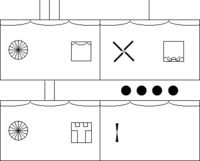
Common complete symbols used in the Air Service include those for:
- bomber, air clouds + (anti square + construction castle) symbols
- fighter, air + (anti + air)
- reconnaissance, air + reconnaissance vertical line in centre [R-99 also + heavy thick vertical line on left]
- AWACS, air + electronics diagonal lighning bolt
- electronic warfare, air + (anti + electronics)
- tanker, air + supply cornucopia + fuel drop
- naval utility helicopter, air + water waves + rotor blades rotated to X
- tankbuster or attack helicopter, air + (jet fan or rotor blades as applicable) + (anti + armour rounded rectangle)
